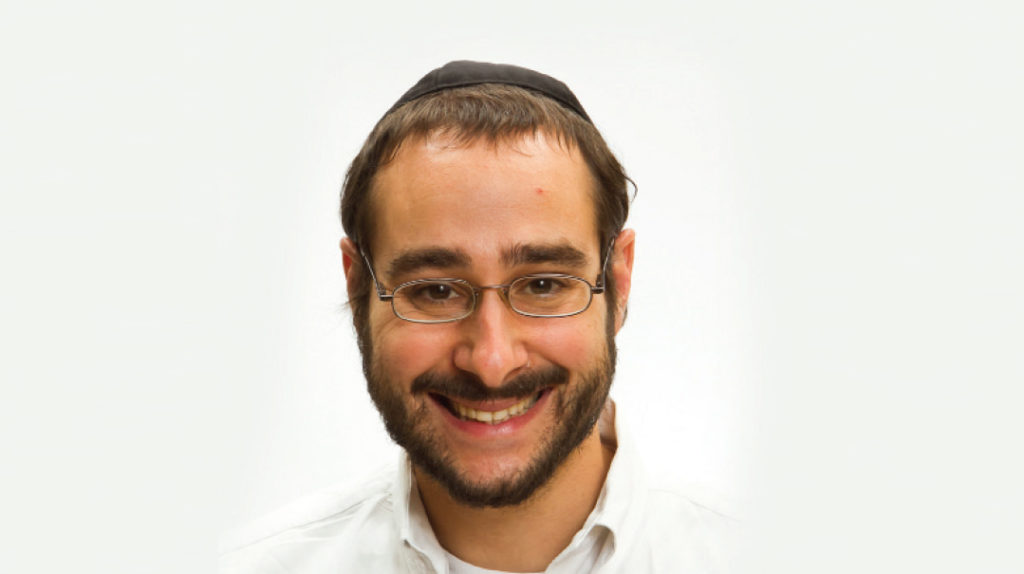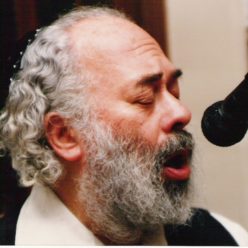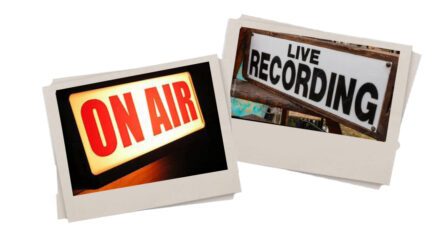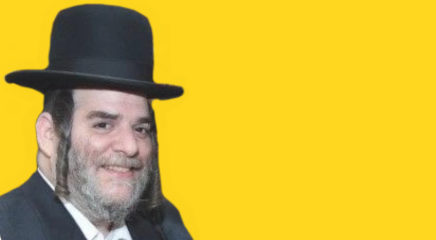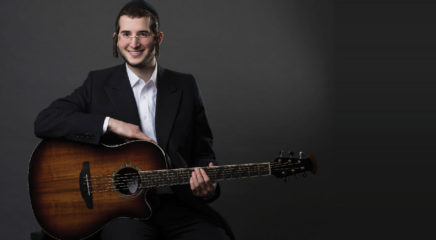"Hundreds of kids gathered around me to hear what I was teaching about Shabbos, at a non-Orthodox event I wasn’t even running, because there was this openness created by the song"
R
ABBI DONNY SHWARTZ is the Midwest Regional Director of NCSY
HOW MUSIC AWAKENS JEWISH HEARTS
Jewish music and Jewish singing have always been an essential part of what we do, especially for teens. Music is so much a part of their lives, so it’s essential that we channel that need for music and use it to connect to the neshamah as opposed to the guf.
On an NCSY regional shabbaton, when we bring the kids together, there is no moment (aside from when someone is saying a devar Torah or we’re bentshing) that music is not playing in the background. From the second we get there until the second we leave, we make sure they’re hearing plenty of Jewish music. On Shabbos, we pick essential songs and make them a theme. We sit and sing together so the kids build up a memory of song.
THE SONGS I FIND MOST MEANINGFUL
We use both vintage and contemporary niggunim, from Carlebach to Shwekey. One song that has become a staple introduction to Shabbos, and in that context the introduction to kiruv itself, is the famous Shalheves “Tov Lehodos.” Since the words are from Mizmor Shir Leyom HaShabbos, we use it as the song of Shabbos.
THE SPECIAL POWER OF A NIGGUN
“Tov Lehodos” is the number one. “Yismechu” by Shlomo Katz is the number two — it has that easy repeat of “Oy yoy Shabbos kodesh, oy yoy Shabbos kodesh.” Carlebach’s “Niggun Neshamah” and Shlomo Katz’s “Niggun Nevo” are also powerful. We sing them over and over and there is no hurdle of words to overcome, just the tune to learn. Another one which has become a staple, specifically in our region, is Shwekey’s “Shema Yisrael.” That powerful chorus has the whole crowd crying and singing.
THE RECIPE FOR SHABBOS TABLE MAGIC
Zemiros have to take a little step back, as these are public school kids and the Hebrew words are too difficult for them to say and relate to. We replace them with traditional Jewish Shabbos songs, like “Yismechu Bemalchuscha,” and with wordless niggunim, because they have the power to resonate widely. We give transliterated song sheets, picking songs with words that are easy to say and easy to relate to. The truth is that technically, it’s so much more complicated for us in the kiruv world to run programming on Shabbos. During the week, we plan amazing activities, while Shabbos has far less options. Yet Shabbos is the prerequisite to Torah, and it needs to come first when you teach Torah to newcomers. And at the end of the day, weekday programs are nice, but Shabbos provides the magic. It’s when things really happen.
MY FAVORITE SONG STORY
On one of our programs, we take a group of public school kids from all over the Midwest to New York for Shabbos. We take them around, but the Shabbos experience always means more to them than seeing Manhattan, the Rockefeller Center or Chinatown. It’s always a beautiful Shabbos. Of course, I teach them “Tov Lehodos” and we sing it the entire Shabbos.
One year, I was invited a few weeks after that Shabbos to join a BBYO group in Chicago. BBYO is a pluralist youth movement, nothing to do with kiruv, just Jewish kids being together. They invited me to come spend Shabbos with them as the rabbi, so I had my own room, brought my own food along and went to teach. On erev Shabbos, I suddenly heard a familiar song. I went to look, and there were four kids who had come to the NCSY Shabbos in New York, teaching twenty of their friends “Tov Lehodos.” They were sitting and singing, yearning for the Shabbos experience. Hundreds of kids gathered around me to hear what I was teaching about Shabbos, at a non-Orthodox event I wasn’t even running, because there was this openness created by the song.
A NEVER-FAIL WARM-UP
“Acheinu” is easy to understand and relate to, very all-inclusive. We also sing “Veha’er Eineinu” from Yehuda. It’s a very strong song. I ask the kids how many of us hold back from showing others what we really believe in and how we can learn to stand up for our beliefs, even if they’re not cool.
WHAT WE DO ABOUT THE HEBREW WORDS
I teach the song once, so that everyone is comfortable, then I explain it, then we sing again, which deepens the impact. The music these kids are listening to most of the time pushes messages about body image and relationships which are the antithesis of Torah beliefs, so imagine what that does to them. We demonstrate that music can be uplifting, carry spirituality and connect us to our heritage.
ENGLISH SONGS THAT ARE GOOD CONNECTORS
Although it’s an oldie, “Someday” from MBD is really big in our region, and I recently introduced Country Yossi’s powerful “Deaf Man in the Shteeble,” about a chazzan whose father is deaf, and the first time he can actually hear his son davening is after he’s left this temporal world (it’s a frum version of the similar-themed oldie country hit, “Blind Man in the Bleachers”). At the close of a shabbaton, we sit around in the dark with candles and speak about the kids’ experiences. Sometimes I have kids tell me about a recent death in the family, and I introduce them to the idea that those who have left us live on Above, and they watch us and have nachas from their loved-ones in This World.
(Originally featured in Mishpacha, Issue 812)
